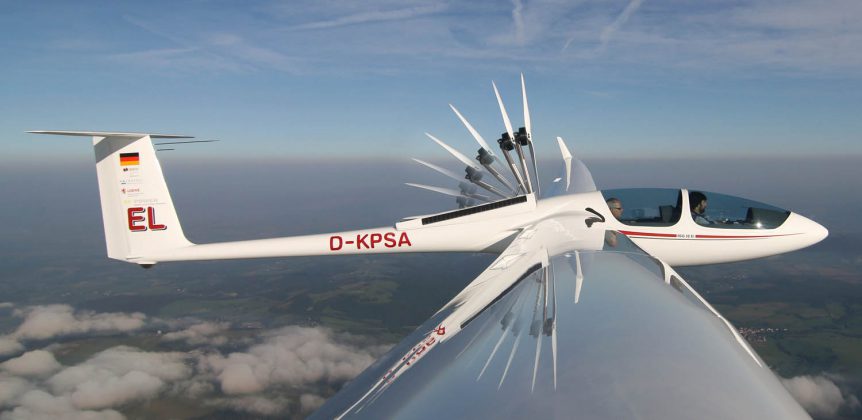Alexander Schleicher Segelflugzeugbau (sailplane maker) has been crafting high-performance soaring craft since its inception in 1927. Their latest creation, a two-seat, 20-meter (65.6 feet) span motorsegler, the ASG32 El, includes a 25 kilowatt synchronous motor driving a Schleicher-designed 1.55 meter (5 feet) retractable propeller. The motor is a “home help” device, a sustainer motor to keep the ASG 32 El aloft once it is launched by a winch or by being pulled by a towplane. The motor does not allow for self-launching. Its low power, coupled with the airplane’s clean design, does enable a 1.3 meter-per-second (255 feet per minute) rate of climb. The aircraft’s battery is sufficient for 20 minutes of all-out power or 100 kilometers (62 miles) of “sawtooth” flight, short climbs followed by longer glides, even with a full load of two pilots. A single control level raises the motor and propeller into operating position, and when pushed further, turns the motor on and controls the …
EMG-6 Takes First Hops
Brian Carpenter of Adventure Aircraft Inc. (part of his Rainbow Aviation Company) must trust his engineering, since he acted as his own test pilot for the first flights of his EMG-6 ultralight glider, a craft with options of mounting one, two, three (or even four, as Brian suggests) electric motors. As an ultralight motor glider it can carry a pilot, ballistic parachute, and a small powerpack with one motor, controller and batteries. Depending on the pilot’s weight, the airplane might be able to self launch and reach soaring altitude, or for heavier payloads, use the motor as a sustainer unit after a ground or aircraft tow to seek out distant thermals. While waiting for this next development, look at the number three test flight, towed from the runway by a “quad” all-terrain vehicle (ATV) and on landing demonstrating a remarkably short landing roll into only a 9-mph wind. Currently favored, the Plettenberg Predator motor and a Schulze 400-Amp motor controller …
Power Up Front
Luka Znidarsic and Matija Znidarsic, both experienced sailplane pilots and mechanical engineers in Slovenia, have developed a Front Electric Sustainer, a power system that provides a climb of 1.5 meters per second (198 feet per minute) for their prototype configuration on an 18-meter LAK 17. They designed their own motor and controller for the application. The motor is 5 kg (11 pounds), and puts out 15 kW (20.1 horsepower) at 85 Volts. Total weight for the power package is 35 kg (77 pounds), with batteries in two packs behind the rear spar, balancing the weight of the motor and propeller in the nose. “Front” refers to the motor’s location, right in the nose of the sailplane. A 0.9 meter (35.4 inches) propeller automatically extends when the outrunner is operating, and folds against the nose of the fuselage when the motor is shut down. The standard nose cone or motor unit can be mounted when the sailplane is put in its trailer, without …

